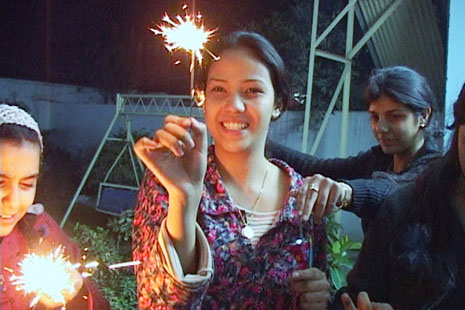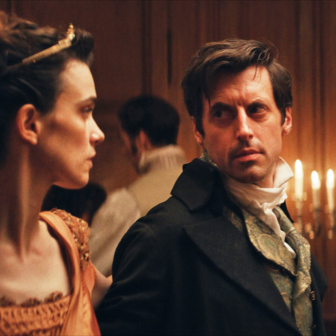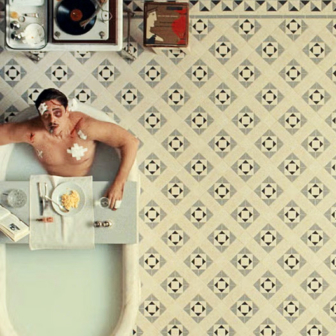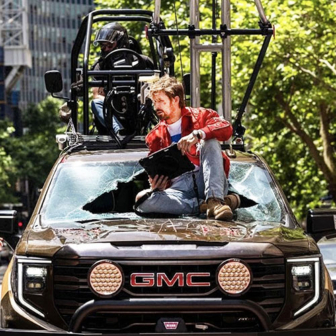FILM FESTIVALS are always social life tangled into moviegoing, and the arguments round responses are lively moments in festival memories: “Did you see that Russian one?” “I walked out, absolutely hated it, what a dreary grind.” “Really? I loved it, thought it was terrific.”
Looking back over decades, I think it was the energy in festival-time talk of that kind which first made me think about the way cinema sets off more intense reactions than most other art/entertainment forms – apart, of course, from rock concerts. If the above conversation goes on, those two will consign each other to the outer reaches of civilisation, and icy mutual enmity, for the foreseeable future. Luckily, it’s brief – they’re swapping responses in the middle of a noisy melée, especially if it’s an interval at the State Theatre in central Sydney. There were other screenings all over town.
As a festival venue, the State has old-style Hollywood glamour, and it holds more than two thousand people. The foyer and lounge spaces are rather small, however, for the times of milling round and chance meetings – with people you haven’t seen since last year, won’t see again till next year, and mightn’t want to see in between. Fodder for gossip, it all matters to the experience – generally more than the red-carpet entries of famous visitors, or that curiously anti-critical business of voting for favourites.
Even though this year’s Sydney Film Festival was cut down to a mere twelve days and about 140 movies, it still felt bigger than Ben-Hur. The queueing was often tough and protracted, but it was excellent that not only the main features, but also local documentaries were sold out. What more could you want, with virtual travel to China, Japan, Korea, Vietnam, Mongolia, Turkey – as well as to France and all the other bits of Europe which began giving Australians their foreign-language cinema fifty years ago? I mention three offerings which, more than others, took us well away from comfort zones.
The Russian one disputed above was one of this year’s great films. Paper Soldier, directed by Alexey German Jr, looks back to 1961, the aftermath of Stalinism and the beginnings of the space race in a cosmodrome in Kazakhstan. It’s a grey and white film of icy landscapes, cloud, mist and mud; badly maintained machinery trundles round everywhere, in a grotesque and pointless ballet; in the far distance, intermittently, rockets take off into the mist. Gagarin and Vostok 1 are getting ready, but the station’s doctor is weighed down by the sense that he’s serving doomed men bent on hopeless projects. With him, the foreground is peopled by professionals, male and female, who keep circling each other at hopelessly crossed purposes, quoting Chekhov as they go. It’s tragi-comic, and profoundly anti-Stalinist; re-creating a past, and so communicating an unending Russian present.
Paper Soldier is unlikely to get commercial release; but film festivals exist partly to offer such unlikely journeys, and the films which take us furthest are generally going to be the ones most strenuously argued over, the ones some people will strongly, even quite violently reject. Another was Missing Water, the Vietnamese–Australian Khoa Do’s intensely ritualised salute to the refugees who made it to Australia in the 1970s, surviving hunger and thirst, attacks from pirates and brutal border police. This director’s earlier Finished People, which follows a group of Vietnamese teenagers adrift in Sydney’s west, was superbly structured, but also naturalistic. Missing Water is not; it creates a concentrated space where film and theatre meet, in ways generally held to be impossible. The ordeal of the re-imagined journey is strung out to an extreme, and the survivor’s memories swamp her present-day life in a garment industry sweatshop.
In Burma VJ, the letters stand for video journalist, and the documentary concerns those of that profession who managed, through the 2007 uprising, to send out enough undercover film work to let us all know that the Buddhist monks, of all people, were marching through Rangoon to signify their dissent from the generals’ regime, their desire for civic freedom and their support for Aung San Suu Kyi. The miracle is that we can see it, and see the city in a state of dignified, peaceful insurgence. All the journalists were detected, arrested and imprisoned; some of the monks, with all their special status, were shot. The journalists’ co-ordinator, far away in Sweden, received their work on the Net and sent it around the globe; in consequence, we watched not only the insurrection itself, but the journalists’ own acts of extreme resistance. Whatever else I saw or missed at the festival in its still-enormous range, this was not to be missed at any price; this is our business.
A FEW WEEKS LATER, the annual Arab Film Festival filled the main auditorium of the Riverside Theatre complex in Parramatta (among much else, it’s an excuse to take the riverboat ride into the further reaches of the harbour). Having begun in 2001 as a Sydney program, this festival is now travelling later in the year to Brisbane, Melbourne, Canberra and Adelaide. It’s a very lively event, with the sense of a highly involved audience assuming real ownership of the films, a part in a shared world. Music clips; Palestinian hip-hop; a great array of shorts, with eloquent brief essays like A Boy, A Wall and a Donkey, a four-minute Palestinian tale in which three kids of seven or eight, sharing their donkey, suddenly encounter the security wall. (This was also in the Sydney Festival program; some said it was the first time they knew how much graffiti that infamous structure now carries.) The View is a single, blackly comic fifteen-minute take; a Palestinian couple on a balcony is seen, unsteadily, as an Israeli sniper, in dialogue with another, considers whether or not he’s looking at a wanted man, and keeps the young man and woman in his sights. Unseen, they discuss their job, their boredom, and the girl who, they reckon, is definitely a babe. The cross-hairs keep moving; news of “the wanted man”; a gunshot, somewhere offscreen. Maybe the couple got away; maybe the Israeli boys would rather be doing something else.
There were eight sessions, films long and short from Jordan, Lebanon, Egypt, Tunisia, Algeria, Palestine, Morocco, Kuwait, Iraq and Iran, with some made here and in Canada. The best thing I saw was a documentary on the years 2003–2007 in Iraq, Life After the Fall, directed by Kasim Abid and centred on the experience of his own family in Baghdad through those years. Around the dinner table, after Saddam has been caught, there’s general jubilation and high hopes. These fade, as hard times set in, and then, in the outbreaks of sectarian violence, one of Abid’s brothers is abducted and killed for absolutely no reason. It’s much more than a film diary; both the home and the surrounding world of Baghdad are made familiar, complex and diverse, in a way never given by the routine TV images of soldiery standing round in the rubble.
The major Egyptian director Youssef Chahine died last year at eighty-two, after six decades of film making; this festival commemorated him with a screening of his 1958 thriller Cairo Station. This was hugely enjoyable; by that date, it was clear, Chahine had thoroughly assimilated his Italian neo-realism and his American film noir. If there was a pièce de resistance in the other sessions I saw it was the wonderful, complex animation called Hurriya and Her Sisters, made by a large group of young Muslim women in southwest and western Sydney, with support from several community centres and the Human Rights Commission, among others. Elegant, witty and beautifully paced, the film tracks four different kinds of female quest. Some figures have headscarves, some not, and one a mass of tangled red hair which seems to curl into Arabic script.
Another reward of the programme was a wonderful documentary called The Secret World, made by high school students in Ramallah, with production guidance from Nicholas Rowe. It is explicitly a variation on Lord of the Flies; the students find themselves left to their own devices; no teachers, no parents around anywhere. They needed some more rigorous editing, but this piece is worth having anyhow, most of all for the long sequence in which the ringleader makes a toilsome journey through a rough tunnel in the security wall. The kids are seen at large in an otherwise deserted city; in the Q & A at the end Nicholas Rowe was asked how they’d managed to clear the streets. He explained that the Israeli military had been most helpful: “They have this arrangement called a curfew.”
I HOPE on the next occasion to discuss the much-welcomed, revived Wake in Fright; some of the local documentaries seen at the Sydney festival and now in wider circulation; and Peter Manning’s important recent film Lebanon Burning, which has been refused an airing by both the ABC and SBS. •





